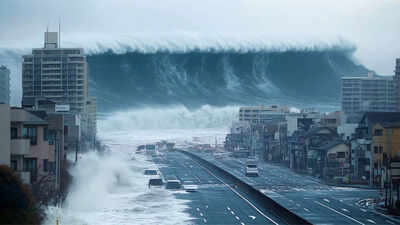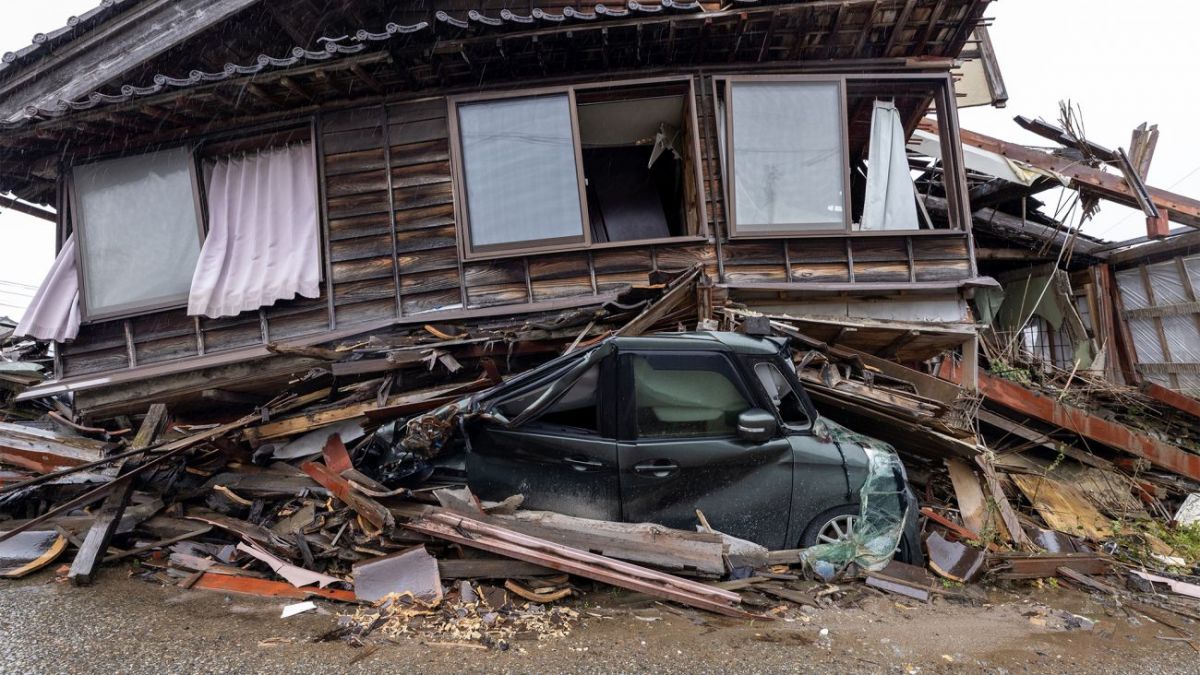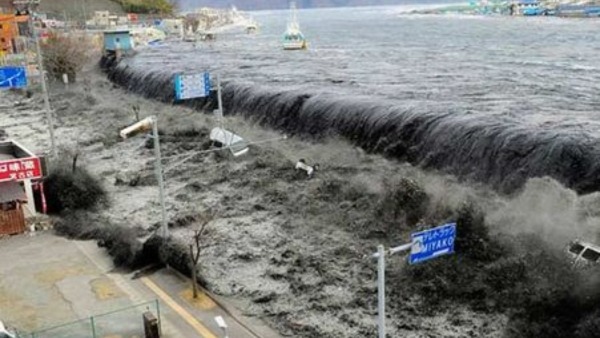Interest in predictions about the future has long been part of human culture. From historical figures like Nostradamus to modern popular culture, claims of prophecy continue to circulate, even without scientific validation. Among the most famous names is Baba Vanga (1911–1996), a Bulgarian mystic whose alleged predictions remain widely discussed.
More recently, attention has turned to Ryo Tatsuki, sometimes called the “Japanese Baba Vanga.” She is known for a manga published in the late 1990s that includes her recorded dreams and interpretations. In 2025, some online discussions have referred to her warnings about possible large-scale disasters.

Who Was Baba Vanga?
Baba Vanga was a blind Bulgarian woman who gained fame for her cryptic sayings and “prophecies.” She lost her sight as a child and became known locally for spiritual guidance. Over time, stories spread attributing to her predictions of major events, such as the rise of Adolf Hitler or the breakup of the Soviet Union.
However, historians and researchers have found little concrete evidence that she made many of the claims widely attributed to her. Most documented statements were vague, and many “predictions” emerged after events occurred.
According to BBC News, while she remains a cultural icon in parts of Eastern Europe, there is no verified record that she accurately predicted global events with specific dates or details BBC, 2019.
Who Is Ryo Tatsuki?
Ryo Tatsuki is a Japanese manga artist best known for The Future I Saw, first published in 1999. The book depicts dreams she claims to have had since the 1980s. Some readers have connected one of these to the devastating 2011 Tōhoku earthquake and tsunami.
It is important to note that these connections are made retrospectively. Tatsuki herself documents dreams but does not offer scientific forecasting. As of 2025, no peer-reviewed research supports the idea that these dreams can reliably predict future earthquakes or disasters.

Earthquake and Tsunami Risks in the Pacific
While specific “predictions” of disasters lack scientific support, the Pacific region is well known for significant seismic risk due to its geology. This region includes the Pacific Ring of Fire, a horseshoe-shaped belt of high seismic and volcanic activity encircling much of the Pacific Ocean.
Key features include:
-
Subduction Zones – where tectonic plates collide, causing powerful undersea earthquakes
-
Volcanic Arcs – chains of volcanoes above subduction zones
-
Transform Faults – such as California’s San Andreas Fault
Japan, Indonesia, Taiwan, and the Northern Mariana Islands all lie along or near the Ring of Fire. These areas have a well-documented history of significant earthquakes and tsunamis.
According to the United States Geological Survey (USGS):
“Subduction zones are responsible for the largest earthquakes in the world, and many of the world’s tsunamis.” USGS, 2024.
For example:
-
The 2011 Tōhoku earthquake (magnitude 9.0) generated a tsunami that killed nearly 20,000 people in Japan (Government of Japan, Reconstruction Agency, 2021).
-
The 2004 Indian Ocean earthquake (magnitude 9.1–9.3) caused over 200,000 deaths across multiple countries.
These events underscore the importance of preparedness and scientific monitoring in seismic regions.

Can Earthquakes Be Predicted?
The scientific consensus is that precise prediction of earthquakes—giving exact dates, locations, and magnitudes—is not currently possible.
According to the USGS:
“Neither the USGS nor any other scientists have ever predicted a major earthquake. They do not know how, and they do not expect to know how any time in the foreseeable future.” USGS, 2024.
Instead, scientists use probabilistic hazard models. These estimate the likelihood of earthquakes over decades based on past patterns, tectonic settings, and fault behavior. For example:
-
Japan’s Nankai Trough has a well-studied history of large earthquakes roughly every 100–150 years.
-
Taiwan and Indonesia face complex subduction dynamics increasing their seismic risk.
Government agencies in Japan, Taiwan, Indonesia, and the U.S. maintain early warning systems and invest in resilient infrastructure.

Cultural Fascination with Prophecies
Despite scientific limitations, predictions about disasters remain popular in media and online discussions. Psychologists suggest reasons include:
-
Cognitive Bias: Humans are pattern-seeking and may see connections even where none exist (University of California, 2022).
-
Anxiety Management: Belief in predictions may feel like gaining control over uncertainty.
-
Entertainment: Mystical predictions often make compelling stories.
For example, Nostradamus (1503–1566) published cryptic verses that have been reinterpreted many times to fit later events. Historians argue that these interpretations often rely on extremely vague language Encyclopaedia Britannica.
The Role of Manga in Japanese Culture
It’s worth noting that Tatsuki’s The Future I Saw is a manga—a medium that blends art, fiction, and autobiography. Manga covers every genre, from fantasy to non-fiction.
Scholars point out that manga often explores the boundary between dream and reality, fact and fiction. Readers may interpret works like Tatsuki’s as art, personal expression, or symbolic warnings—not scientific predictions.
According to Dr. Frederik L. Schodt, an expert in Japanese popular culture:
“Manga can be both fantastical and realistic. Its strength is in the way it makes even speculative themes accessible.” [Schodt, Manga! Manga!, 1983].
Preparedness in High-Risk Regions
While individual predictions of specific disasters lack scientific basis, preparedness for natural disasters is a proven, evidence-based priority.
Governments and NGOs promote:
-
Early Warning Systems (e.g., Japan Meteorological Agency’s tsunami alerts)
-
Evacuation Planning
-
Public Education Campaigns
-
Earthquake-resistant construction standards
The United Nations Office for Disaster Risk Reduction (UNDRR) emphasizes that while earthquakes cannot be predicted, risk can be mitigated through planning and investment UNDRR, 2024.

Conclusion
Claims about specific prophecies of major disasters—such as those circulating online about July 2025—have no scientific foundation. While cultural fascination with predictions persists, experts agree that earthquake science does not support forecasting specific dates for catastrophic events.
However, regions like Japan, Taiwan, Indonesia, and the Northern Mariana Islands face real, well-documented seismic risks. Rather than relying on unverified predictions, authorities and communities focus on evidence-based strategies to reduce loss of life and economic damage when earthquakes and tsunamis do occur.
Public awareness, preparedness, and investment in resilient infrastructure remain the most reliable approaches to managing seismic hazard in the Pacific region and worldwide.
Sources
-
BBC News. (2019). Baba Vanga: The blind Bulgarian mystic who ‘predicted Brexit’. Link
-
United States Geological Survey (USGS). (2024). Can You Predict Earthquakes?
-
USGS Subduction Zones Overview. (2024). Link
-
Government of Japan, Reconstruction Agency. (2021). Progress and Challenges in Reconstruction from the Great East Japan Earthquake
-
Encyclopaedia Britannica. Nostradamus. Link
-
UNDRR. (2024). Disaster Risk Reduction Terminology. Link
-
Schodt, Frederik L. (1983). Manga! Manga! The World of Japanese Comics.


